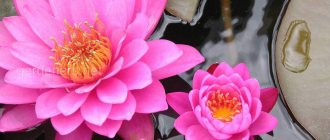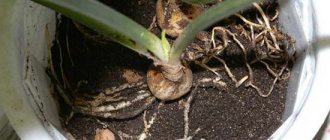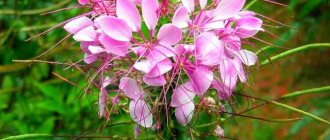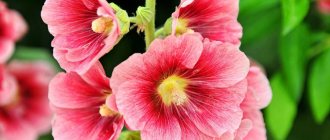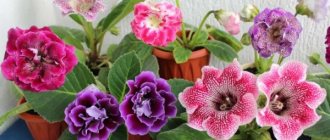The water lily belongs to the water lily family, which includes more than 50 species of perennials with powerful, fleshy rhizomes. A water lily is often mistakenly called a water lily.
This is an amazing flower. The white water lily (the Red Book of Russia includes it as a rare plant) among the Slavs was an obligatory component of various love spells. It was believed that this plant, taken on the road with you, would protect a person from any evil. Carl Linnaeus, a famous biologist who collected legends about this plant, was surprised by the fate of the nymph, rejected by Hercules, and turned into a water lily by the gods. Because of this, he decided to give the flower a Latin name in her honor - white nymphea.
Claude Monet, a French painter, painted “White Water Lilies” in oil on canvas in 1899. He reflected how beautiful the nature that surrounds us is.
Interesting things about the plant
White water lily (water lily) is a natural weather forecaster. There are a huge number of signs of plant behavior depending on the weather.
It has been observed over the years that if the flowers open early in the morning, the weather will be clear all day, while if it appears only at 9 am, it will rain. If it doesn’t appear at all, there will soon be a heavy and prolonged downpour.
Features of care
In order for the water lilies in the pond to please you for as long as possible, you need to know how to properly care for them. Despite the fact that nymphs are unpretentious in care, minimal measures still need to be taken. These include:
- fertilization;
- weeding out bad and diseased flowers;
- harvesting tropical varieties for winter.
Fertilizing water lilies is done directly with their planting. To do this, pour a mixture of fertile soil with sand and compost into the container. A little bone meal is also added there, after wrapping it in clay balls so that it does not wash out so quickly.
It is necessary to promptly remove dead flowers and yellowed leaves from plants so that they do not clog the pond. Water lilies tend to grow very quickly and in a short time can fill the entire surface of the water. After this, there are fewer and fewer flowers, and they bloom less and less often. Therefore, when planting water lilies, it is necessary to leave at least half of the pond free.
Planting water lilies in small containers will allow you not only to move them around the perimeter of the reservoir, thereby changing its design, but also to easily remove them for the winter.
Every spring, after the nymphs overwinter, the pond needs to be cleaned. To do this, the container with the plant is removed from the reservoir and cleaned of organic debris and fallen leaves. After this, the water itself is purified from various debris.
It is necessary to promptly remove dead flowers and yellowed leaves from plants.
White water lily: description
It is a stemless perennial herbaceous and aquatic plant with large, floating leaves. It belongs to the water lilies. It has a creeping rhizome, adjacent to it are heart-shaped leaves, as well as long stalks with white single flowers. Flowers with a large number of white petals, emit a light aroma, float on the water. Their calyx is four-leafed and green. Many stamens, radiate multipartite stigma. The fruits are spherical, green, and always ripen under water. Flowering occurs in June-July.
Places of growth
It grows in the European part of our country, in the southern part of Siberia, in the Urals, Belarus, Ukraine, Eastern Transcaucasia, and the North Caucasus. The white water lily's habitat is standing and slowly flowing water (lakes, ponds, river bays).
Recently, the conditions for the plant to live in nature have been deteriorating, therefore, these days it has been included in the Red Book.
Range and varieties
There are over 40 varieties of water lilies in the world. The habitat of all these aquatic plants is natural ponds with a slow current. You can find white lilies throughout Europe, the Caucasus, the Urals and Western Siberia. Nevertheless, it is a rare plant, so the water lily is listed in the Red Book in most regions as requiring constant attention and protection.
For example, in the Saratov region it can be found in almost all reservoirs along the banks of the Volga. The plant is found in most areas of the region. In similar places the snow-white water lily grows, whose petals look even whiter. The water lily is listed in the Red Book of the Saratov region as a vulnerable species.
The tetrahedral water lily lives in the northern regions of the country:
This is the smallest representative of the water lily family. On a quadrangular calyx, in a small-diameter inflorescence, there are 12 white, ovoid petals with spear-shaped edges. A brief description of this elegant flower is contained on its pages in the Red Book of the Arkhangelsk Region.
Yellow water lily (lily lily)
The closest relative of the white one is the yellow water lily. Its flowers are somewhat smaller (4-6 cm in diameter). Five to six sepals tightly surround a bright yellow core. The yellow water lily has a second name - egg capsule. The fact is that the ripe fruit of the plant is very similar to an ancient vessel with convex sides.
The yellow water lily, listed in the Red Book, reproduces both by individual parts of the rhizome and by seeds. Pollinated by beetles, the bud is lowered into the water. The fruit ripens under water. In fact, the egg-pod-like fruit with seeds floats up and the seeds are carried by the current and birds along the pond.
The yellow water lily (or water lily) is used to make medicinal preparations. Based on its rhizome, the medicinal product “Lutenurin” was produced. The Red Book of the Arkhangelsk Region includes it in its protected list.
Harvesting and collection
The period for collecting water lilies is selected depending on the required part of it.
If these are roots, then collection should be carried out in early autumn, when a huge amount of nutrients has already accumulated in them. They are extracted from the bottom using hooks, then cleaned of leaf cuttings and small roots. Then they are washed, cut into equal-sized pieces and dried in a ventilated room or outside in the shade.
If these are buds or flowers of the white water lily plant, then you need to accurately select the time of collection. This should happen during flowering. In addition, they need to be collected before 5 pm, and if just buds, then before 7 am or immediately after 5 pm, since the flowers are submerged under water after this time. Mostly flowers are taken fresh, but if necessary, they are dried in a ventilated, shady place.
The leaves of the plant can be collected in the fall before the onset of cold weather around the clock. The leaves are dried under the same conditions as all other parts - in a ventilated, shady room.
The fruits and seeds of the water lily are collected during its flowering (it must be borne in mind that one flower blooms for only 4 days): for example, the seeds are taken directly from the surface of the water, where they float in “capsules”, while the fruits are taken at a shallow depth under water. Seeds and fruits need to be dried after collection.
Although not only these rules are recommended to be followed by magicians and healers. When various parts of the water lily are torn off, you should always appease the water spirit, since this plant is under its protection: this can be done by throwing a piece of bread or a few coins into the water.
When collecting the plant, you need to remember that the water lily is listed in the Red Books in many countries, therefore, it can only be collected in limited quantities.
Water lily, water lily (Nymphaéa)
Family Nymphaeaceae.
Name: The water lily received its Latin name from the name of the water nymph. The Slavs called it “mermaid flower” or overpowering grass. It was believed that the water lily flower was able to protect a person during travel from various troubles and misfortunes. There was even a belief: “Whoever finds the herb will find great talent... on the path, wherever he goes, he will find a lot of good and overcome evil forces and illnesses.” It was recommended to put it in an amulet and wear it as an amulet.
Description: The genus includes almost 35 species of plants growing in temperate and tropical regions - from the equator to Canada. I will specifically focus on one that is found in natural reservoirs in Russia - Snow-white water lily - (N. candida) In the soil, at the bottom of the reservoir, it develops a powerful rhizome with a tuberculate surface, reaching 5 cm in thickness.
Snow-white, or pure white, or snow-white water lily (Nymphaea candida)
Long white cord-like roots extend down from the rhizome, and wide, rounded in outline, with deep cuts at the base, leaves on long flexible petioles and peduncles rise up to the surface of the reservoir. Flowering of water lilies begins in May-June and sometimes continues until the first frost. Peak flowering occurs in July-August. The flowers are snow-white with a delicate aroma, reach 10-15 cm. On the outside they have four green sepals, inside there are white petals arranged in several rows, passing in the center to the stamen. The flower lasts for about four days. After flowering, the peduncle curls and goes under water. Fruit: a capsule that develops under water, when ripe it opens and pours out mucus-clad seeds, reminiscent of fish eggs. They float for a while, when the mucus is destroyed, they sink to the bottom and germinate.
Features of the water lily: in the morning the bud floats to the surface and blooms, in the evening the flower closes and sinks to the bottom.
Snow-white, or pure white, or snow-white water lily (Nymphaea candida). © Alex Balbas
In gardens and decorative ponds, mostly hybrid water lilies are grown. For small and medium-sized reservoirs, pink water lilies are best suited; they are more hardy and do not grow much.
Location: Water lilies prefer a sunny location. They will not bloom in full shade. Planting water lilies should be done at the rate of 1 per 0.5-4 square meters. m. otherwise the reservoir will seem overgrown. It loves stagnant water, so it is not recommended to arrange fountains.
Planting and transplanting: The best time to purchase and plant is from the beginning of May to the end of June. Plants can be planted in the soil of a reservoir, but our own experience shows that it is best to plant the water lily in a plastic container of at least 5 liters. (it will be more convenient to clean for the winter). For planting use: peat 2-3 cm thick on the bottom of the vessel, a mixture of old compost + sand + garden soil, all in equal parts. I used commercial soil for aquatic plants. When planting a water lily, we place fertilizer balls under the roots (meat - bone meal + clay, a ball the size of a tennis ball is made). When planting, do not bury the growth bud! We crush the soil and cover it with pebbles so that the plant does not float up. Carefully place the container with the planted plant in the pond. The optimal depth of the container depends on the plant variety. For dwarfs, 15-20 cm is enough, for very tall ones, 70-100 cm from the growth bud to the surface. In the spring, in order to accelerate the growth and development of the plant, the container is placed in shallow water while there are no leaves, after the leaves grow - to the recommended depth. Plants planted early have time to take root and bloom in the first year of life in a new place.
Snow-white water lily
Overwintering: The hardest part about growing water lilies is keeping them through the winter. This problem has to be solved individually. Plants can remain in their places in winter if they are at a depth of 0.5 m or more, and the reservoir is large and does not freeze to the bottom. If the reservoir can freeze to the bottom or the water is drained for the winter, then the containers with water lilies should be moved to a cool, dark, non-freezing place. Water lilies wake up in the spring when the water begins to warm up. At this time, the plant that overwintered outside the reservoir must be returned to its place. If there is not a lot of melt water in the reservoir, then add tap water. After a few days, the water may “bloom” becoming cloudy green. There is no need to worry and change the water; in a week it will become clear. Spring frosts are no longer dangerous for frost-resistant species.
Diseases and pests: generally, these plants do not get sick, but in dry, hot weather they can be damaged by aphids.
Reproduction: mainly by rhizome segments. The rhizomes branch and have dormant buds. For propagation, a piece of rhizome with a bud is used. It is recommended to sprinkle the cut with crushed charcoal or ash. The roots and leaves do not tolerate drying out, so the division process should not be prolonged. For transportation, the plant is placed in a container with water.
May everything work out for you, and may the plants you grow in the pond bring you joy!
Application
The white water lily plant is actively used in folk medicine. An infusion of flowers is used to quench thirst, as a soothing and antipyretic effective remedy. An aqueous infusion of these flowers is used for insomnia as a sleeping pill and sedative.
Medicinal preparations from the rhizomes and roots of the plant help reduce skin inflammation, while when crushed they are used as mustard plasters.
If you add the leaves of the white water lily to the roots of the plant, this decoction will help with constipation and jaundice. The roots, boiled in wort, are consumed by nursing women, thereby increasing the amount of milk.
An alcoholic tincture made from the leaves is drunk for urolithiasis. In case of hair loss, it is recommended to wash your hair with a decoction of the roots of the plant.
The infusion, which is prepared from the flowers of this medicinal plant, is used for baths and washes, in addition to relieving pain as an external remedy.
Dry rhizomes can be ground into flour and baked into bread.
Contraindications
Medicinal water lily can bring both benefit and harm to the body. You cannot use decoctions and infusions from its roots and green parts:
- with hypotension;
- during pregnancy and breastfeeding;
- for individual allergies;
- in severe cardiovascular diseases.
It is necessary to use homemade preparations based on white water lily in accordance with proven recipes. In case of overdose, decoctions and infusions can cause digestive disorders, dizziness and migraines, as well as heart rhythm disturbances.

